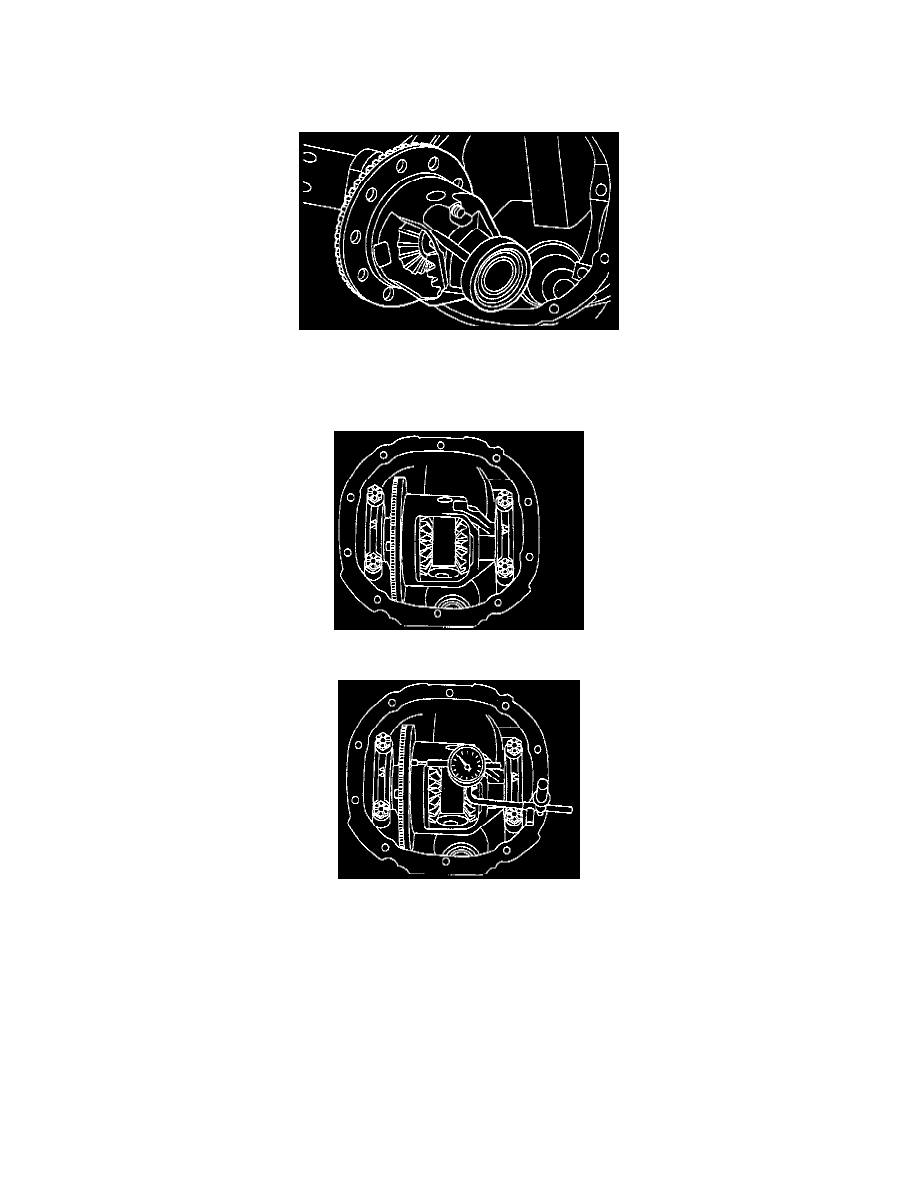Explorer 2WD V6-245 4.0L SOHC VIN E EFI (1997)

Differential Case: Testing and Inspection
Runout Check
If the ring gear runout check (before disassembly) exceeds specification, the condition may be caused by a warped ring gear, a damaged differential case,
excessively worn differential bearings, or foreign material between mating
1. Remove the differential case from the axle housing. Remove the bolts that attach the ring gear to the differential case. Remove the ring gear from
the differential case with a hammer and a drift.
2. Install the differential assembly including the differential bearing cups and shims in the axle housing. Tighten the bearing cap bolts to 95-115 Nm
(70-85 ft. lbs.).
3. Rotate assembly to ensure proper seating of the differential bearings.
4. Check the runout of the differential case flange with Dial Indicator With Bracketry. If the runout is less than 0.076 mm (0.003 in), install a new
ring and pinion gear. If the runout exceeds specification, the trouble is caused by a damaged differential case or differential bearings.
5. Visually inspect the differential bearings. If the differential bearings are not damaged, replace both the differential case and differential bearings.
Recheck the runout with new parts (differential case and differential bearings).
6. Install new differential bearings on the case hubs using Differential Side Bearing Replacer Tool and install the differential assembly in the cattier
without the ring gear.
NOTE: Press against the bearing cone only.
7. Check the differential case runout with the new differential bearings. If the runout is now within limits, use the new differential bearings for
assembly. If the runout is still excessive, the differential case is damaged and should be replaced.
